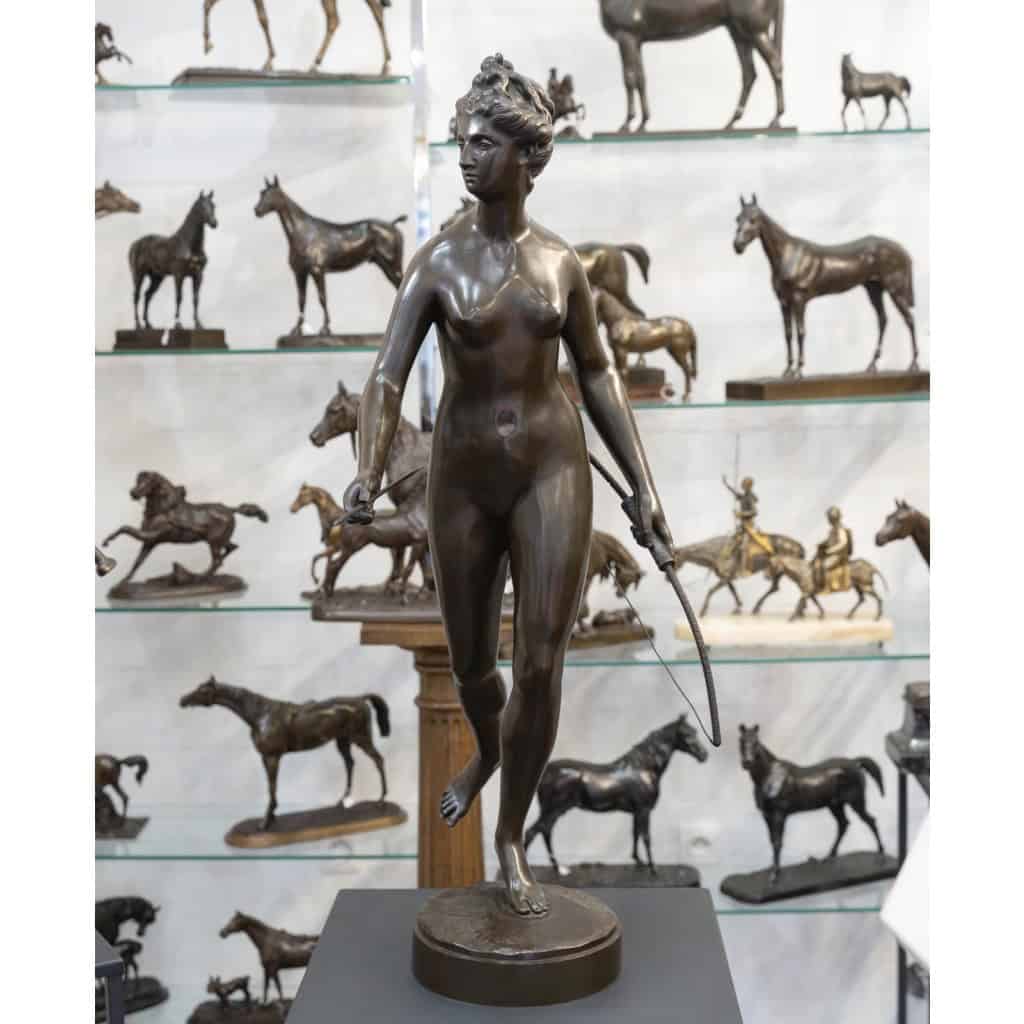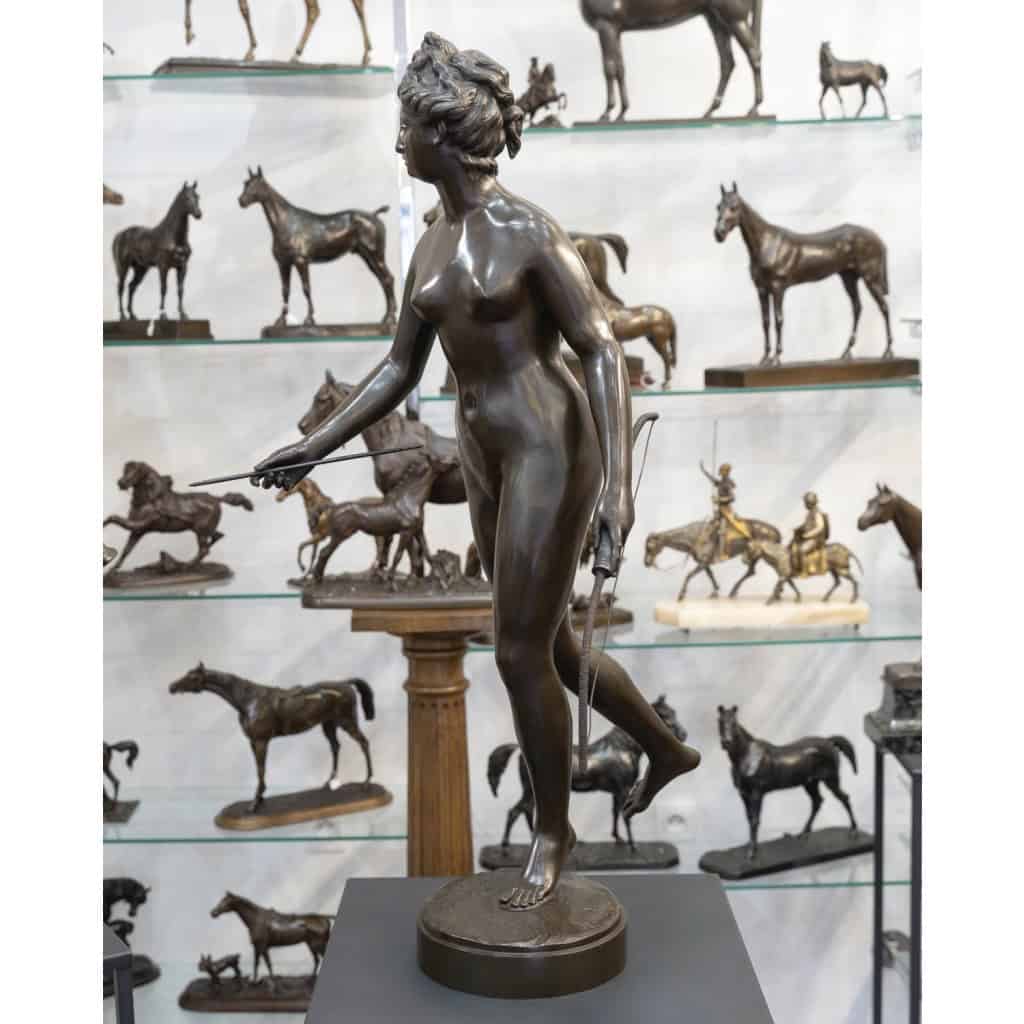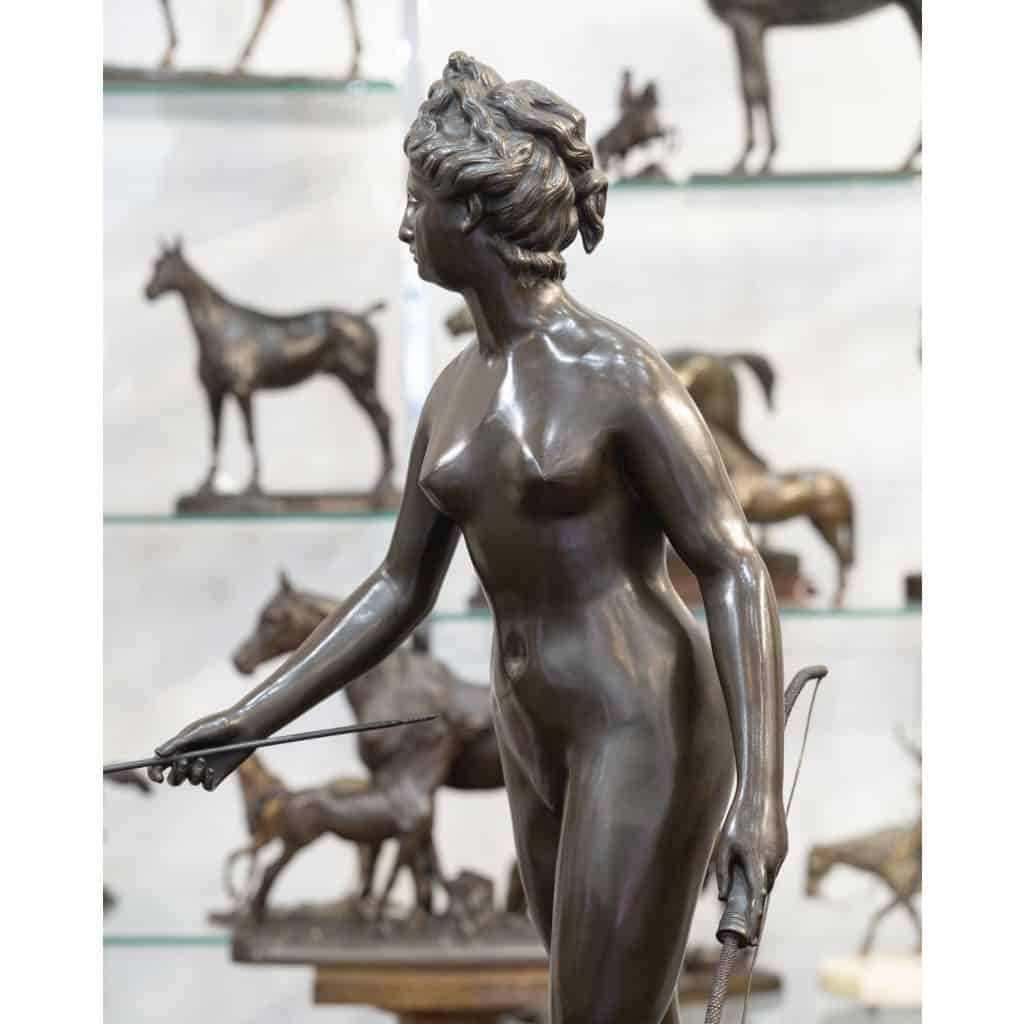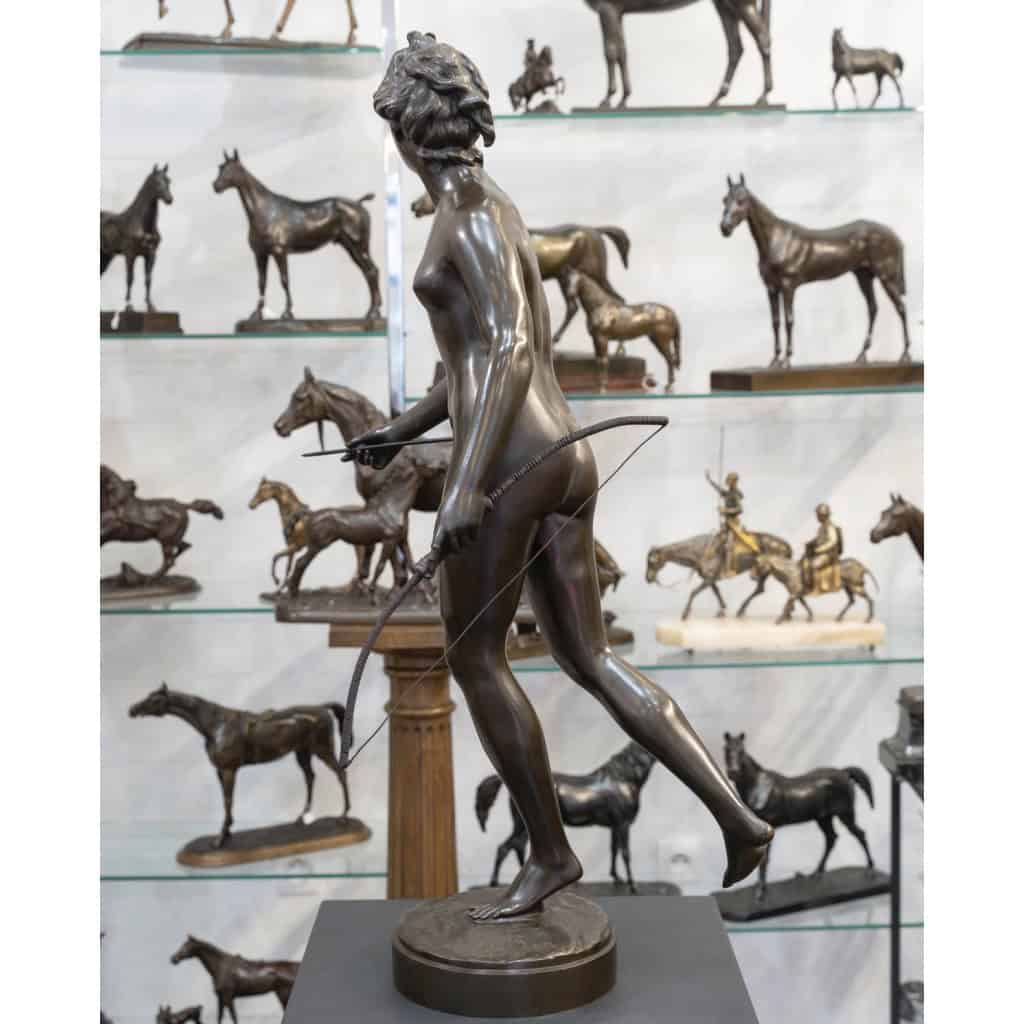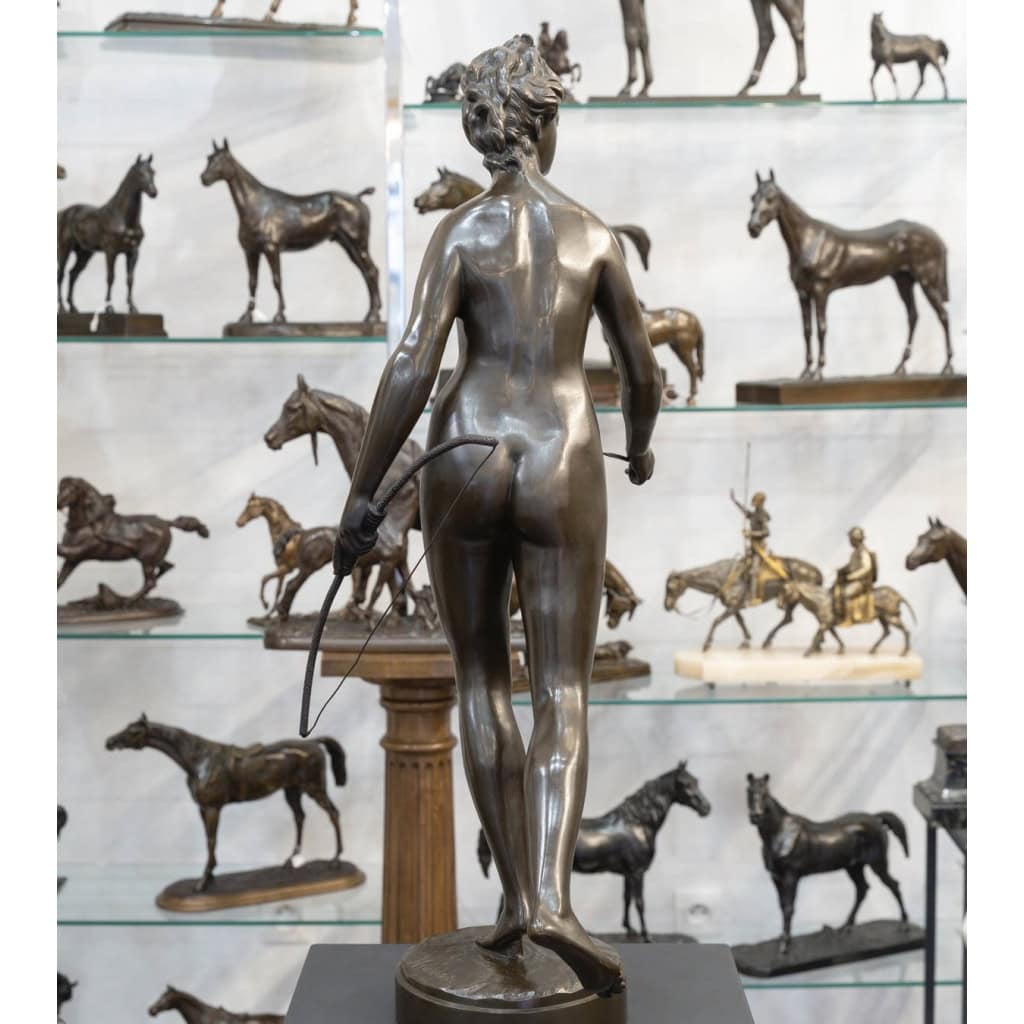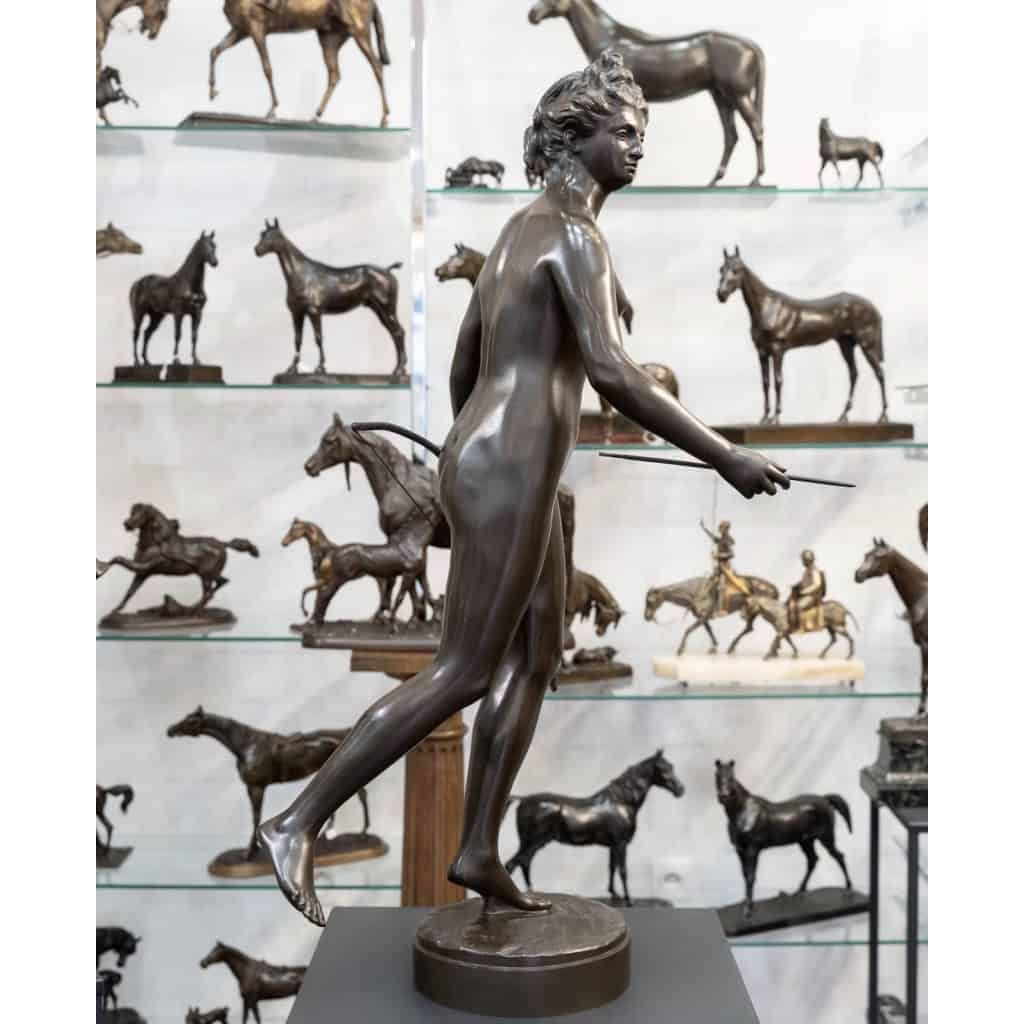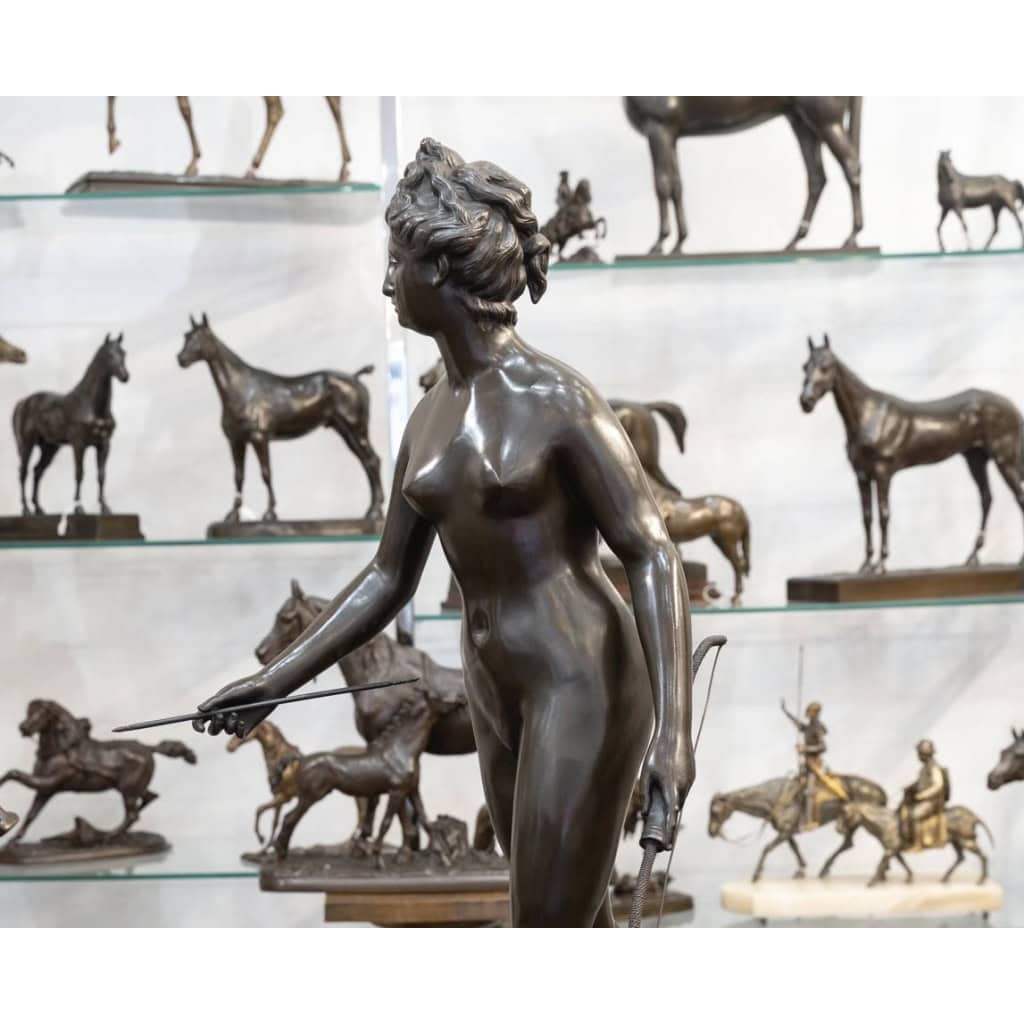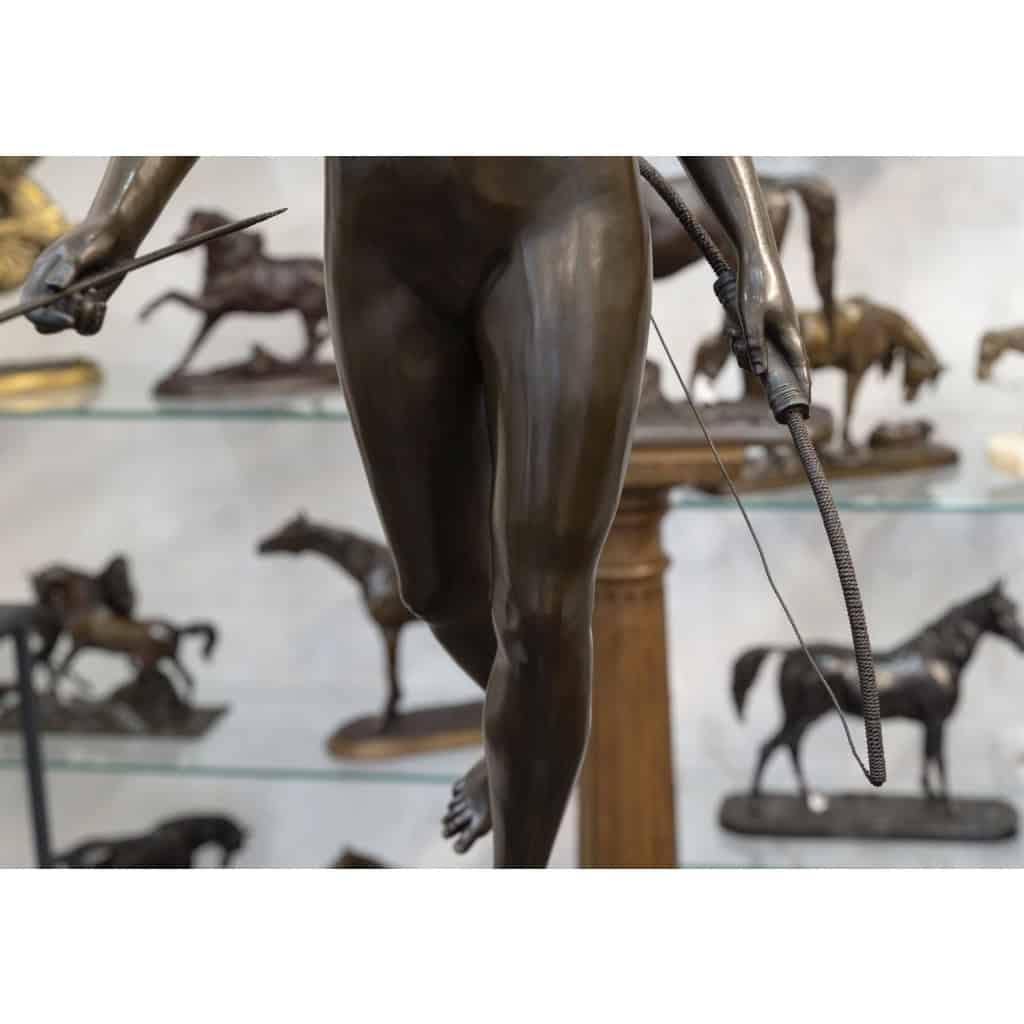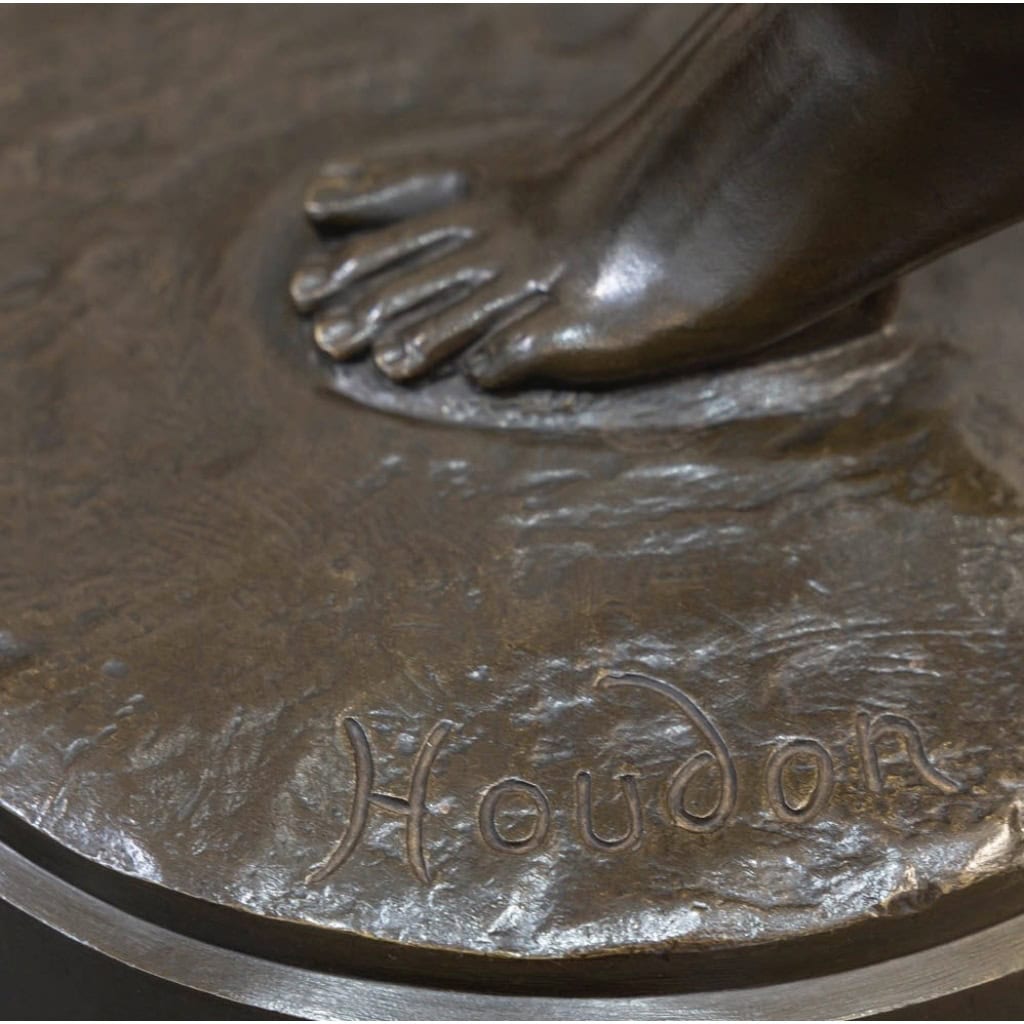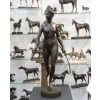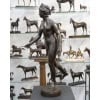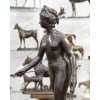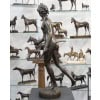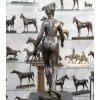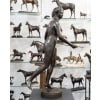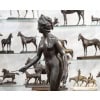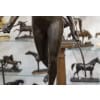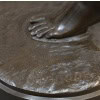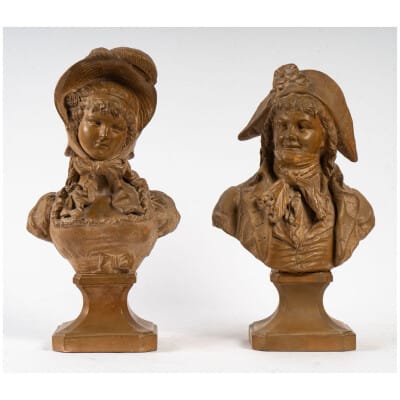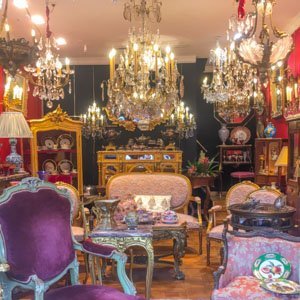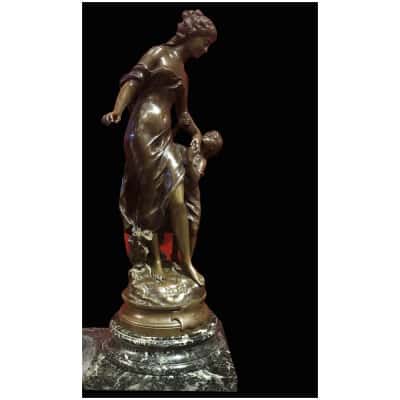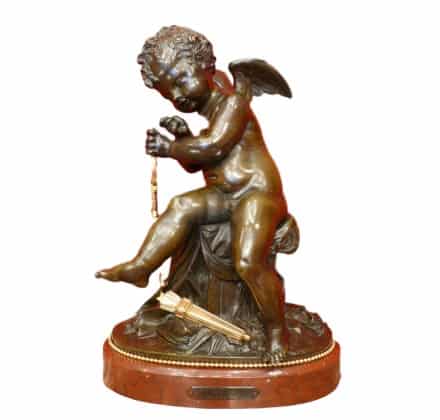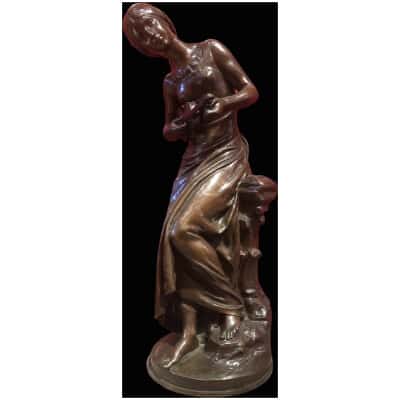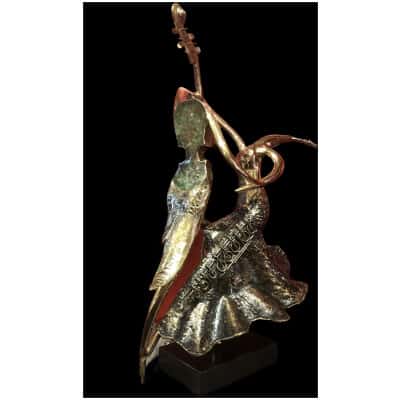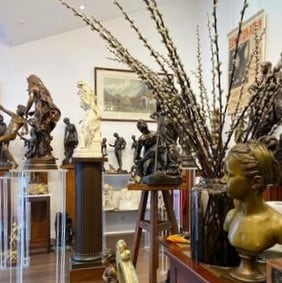
CaTaLogUE Des PucEs
Sculpture – Diane Chasseresse , Jean – Antoine Houdon (1741-1828) – Bronze
Disponibilité :
EN STOCK€3.600,00
Importante épreuve en bronze à patine brune , figurant la déesse « Diane Chasseresse », d’après le sculpteur Jean-Antoine Houdon.
Dans la mythologie romaine , « Diane » est la déesse de la procréation , de la chasse , de la nature sauvage , et de la nuit .
Fille de « Zeus » et « Léto » , sœur jumelle d’ « Apollon » , elle est associée à la Lune , par opposition à son frère qui est associé au Soleil .
Elle est assimilée à la déesse « Artémis » dans la mythologie grecque .
« Diane » figure debout , elle tient dans une de ses mains son arc , dans l’autre sa flèche .
Elle est représentée dénudée , « Houdon » justifia son choix , non conforme par rapport aux moeurs de l’époque , du fait que pour lui , la nudité des dieux , qui ont un corps parfait , n’est pas impudique contrairement à celle des Hommes .
Sculpture d’édition ancienne , signée « HOUDON » en creux , sur la terrasse naturaliste .
Période seconde partie du XIX ème siècle , circa 1880 .
Très bon état de conservation et de patine .
L’œuvre se rapproche du courant néoclassique dans la fidélité du visage à l’Antiquité .
L’aspect très épuré , simple de l’ensemble relève également du classicisme , tout comme la pureté linéaire des contours.
La sérénité de l’ensemble et sa sincérité marquent toujours ce retour à l’Antique .
Hauteur : 81 cm
Important bronze proof with brown patina , representing the goddess « Diana the Huntress », after the sculptor Jean-Antoine Houdon .
In Roman mythology , « Diana » is the goddess of procreation , hunting , wilderness and the night .
Daughter of « Zeus » and “Leto”, twin sister of « Apollo », she is associated with the Moon , as opposed to her brother who is associated with the Sun .
She is likened to the goddess « Artemis » in Greek mythology .
« Diana » is shown standing , holding her bow in one hand and her arrow in the other .
Houdon justified his choice , which did not conform to the mores of the time , by saying that for him , the nudity of the gods , who have perfect bodies , was not immodest , unlike that of men .
Early edition sculpture , signed « HOUDON » on the naturalistic terrace .
Second half of the 19th century , circa 1880 .
Very good condition and patina .
The work is close to the neoclassical movement in its fidelity of the face to Antiquity.
The purity and simplicity of the overall effect is also classicist , as is the linear purity of the contours .
The serenity and sincerity of the whole still mark this return to Antiquity .
Height : 81 cm

Jean – Antoine Houdon (1741-1828)
Jean – Antoine Houdon , né le 20 mars 1741 à Versailles , célèbre sculpteur français , il est l’un des plus importants statuaires du XVIII ème siècle , réputé pour le rendu réaliste de ses œuvres .
Le fait que son père ait occupé l’emploi de concierge à l’École Royale des élèves protégés , facilita sans doute ses débuts .
Élève de l’Académie Royale avant d’avoir quinze ans , pensionnaire de l’École des élèves protégés (1761-1764) , puis de l’Académie de France à Rome (1764-1768) , agréé à l’Académie royale en 1769 , il fut reçu membre de cette dernière en 1777 , sur présentation de son Morphée (Louvre) .
Si en 1793 , il fut parmi les premiers à renoncer spontanément à son titre et à ses privilèges académiques , il fut élu membre du nouvel Institut dès 1795 , et présenta avec succès sa candidature à l’ordre de la Légion d’honneur dès 1803 .
Ni ses deux voyages en Allemagne (1771 et 1773) , ni son voyage aux États-Unis (1785) , ni son mariage (1786) , ni même la tourmente révolutionnaire ne perturbèrent son activité créatrice , dont la manifestation la plus visible fut la régularité avec laquelle il exposa aux Salons : de 1769 à 1795 , il présenta tous les deux ans un nombre assez important de sculptures .
Très habile pour travailler le marbre , Houdon a aussi un grand talent pour façonner l’argile et le plâtre .
Son oeuvre est caractérisée par le réalisme et la précision dans la représentation des corps , et notamment des bustes où il excelle et qu’il sait rendre très vivants .
Selon Grimm , « Houdon était peut être le premier sculpteur qui ait su modeler les yeux ».
S’il était nécessaire de prouver que l’on peut être un artiste de génie en menant une existence parfaitement rangée , en défendant âprement ses intérêts matériels et en manifestant un opportunisme tempéré d’indifférence à l’égard des événements politiques de son temps , la vie de Jean Antoine Houdon suffirait à en apporter la preuve .
Jean – Antoine Houdon (1741-1828)
Jean – Antoine Houdon , born March 20 , 1741 in Versailles , famous French sculptor ,he is one of the most important statuaries of the 18th century , renowned for the realistic rendering of his works .
His father’s position as concierge at the Royal School for Protected Students undoubtedly facilitated his early career .
A pupil at the Royal Academy before the age of fifteen , a boarder at the Royal School for Protected Students (1761-1764), then at the French Academy in Rome (1764-1768), admitted to the Royal Academy in 1769 , he was accepted as a member in 1777 , on presentation of his Morphée (Louvre) .
In 1793 , he was among the first to renounce his title and academic privileges , but was elected a member of the new Institut in 1795 , and successfully applied for the Legion of Honor in 1803 .
Neither his two trips to Germany (1771 and 1773) , nor his trip to the United States (1785) , nor his marriage (1786) , nor even the turmoil of the revolution disrupted his creative activity , the most visible manifestation of which was the regularity with which he exhibited at the Salons : from 1769 to 1795 , he presented a fairly large number of sculptures every two years .
Highly skilled in marble , Houdon also had a great talent for shaping clay and plaster .
His work is characterized by realism and precision in the representation of bodies , particularly busts , in which he excelled and which he knew how to bring to life .
According to Grimm , « Houdon was perhaps the first sculptor who knew how to model eyes ».
If it were necessary to prove that it is possible to be an artist of genius while leading a perfectly ordered life , bitterly defending his material interests and demonstrating an opportunism tempered with indifference to the political events of his time , Jean Antoine Houdon’s life would be enough to prove it .
Disponibilité :
EN STOCK| Lieux | |
|---|---|
| Siècle | |
| Style | |
| Type d'Objet |
